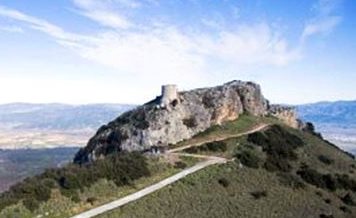
Battle of Neopatras |
year: 1274 (?)early 1270’s |
| Defeat of the Imperial army by the Latin allies of the Despotate of Thessaly | ★ ★ ★ ★ ★ |
|
enemy: Latins
|
location: Neopatras or New Patrai, modern Ypati, Fthiotida, in Central Greece
|
accuracy:
●●●●●
|
|
battle type: Surprise Attack |
war: Despotate Wars |
modern country:
Greece |
| ▼ The Byzantines(emperor: Michael VIII Palaiologos) | ▼ The Enemies | |
| Commander: | Sebastokrator John Palaiologos | Despot John I Doukas of Thessaly |
| Forces: | 30,000 (?) | 300 to 500 horsemen |
| Losses: |
| Background story: |
| In 1268, Michael II Doukas, the despot of Epirus died, and his possessions were divided among his sons: Nikephoros, inherited what remained of Epirus’ dominion, while John, who had married the daughter of a local Vlach ruler of Thessaly (“Great Wallachia”), received Thessaly with his capital at Neopatras. Both brothers were hostile to the restored Byzantine Empire, which aimed to reclaim their territories, and they maintained close relations with the Latin states in southern Greece. The Byzantine Emperor Michael VIII Palaiologos, tried to attach them to him through dynastic marriages but both brothers, and particularly John Doukas, remained ill-disposed towards him. Following the deeply unpopular initiative of Michael VIII, the Union of the Churches in 1274, the two even provided refuge for the many dissenters and critics of Michael's religious policies. Eventually, Michael VIII decided to take action against the kingdom of Thessaly and assembled a huge force, mostly mercenaries, which contemporary sources put, certainly with considerable exaggeration, at 30,000. These were placed under his own brother, John Palaiologos, and the governor of Thessaloniki Alexios Kaballarios. This force was sent against Thessaly, and was to be aided by the Byzantine navy under the protostrator Alexios Doukas Philanthropenos, who was to attack the Latin principalities and prevent them from aiding John Doukas. |
The Battle: |
 remains of the castle of Neopatra The two rulers concluded a treaty of alliance, by which John de la Roche's brother and heir, William, would marry John Doukas' daughter Helen and receive the fortresses of Gravia, Siderokastron, Gardiki and Lamia as her dowry. In return, de la Roche gave Doukas 300 or 500 horsemen (depending on the source) with whom he returned quickly to Neopatras. The Byzantine force there had been considerably weakened, with several detachments sent off to capture other forts or plunder the region, and was furthermore unwieldy and not very cohesive, given the many races that served in it. According to the Venetian historian Marino Sanudo, when John Doukas and John de la Roche climbed a height and saw the huge Byzantine encampment, de la Roche uttered, in Greek, a phrase from Herodotus: “there are a lot of people here, but few men.” Indeed, the Byzantine troops panicked under the sudden attack of the smaller but disciplined Latin force, and broke completely when a Cuman contingent abruptly switched sides. Despite John Palaiologos' attempts to rally his forces, they fled and scattered. |
Noteworthy: |
| One of the reasons for the enmity with the Palaiologi was that the Despots of Epirus were descendants of three different Byzantine imperial dynasties (Dukes, Angeloi, Komnenoi) and were considered (by friends and enemies) to have the highest possible noble descent, well above the Palaiologoi who at that time were still considered usurpers. |
Aftermath: |
| John Palaiologos was shattered by the loss of his army at Neopatras. Despite his victory a little later in Demetrias, he resigned from his title of Despot (or maybe his brother, the emperor, just fired him) and died shortly after. |
|
|
